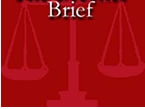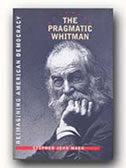« March 2007 | Main | June 2007 »
May 21, 2007
The Paradox of White Trash
In political discourse over the past forty-plus years, the terms “race” and “class” have often been conflated, confused, and distorted. Since at least the twilight of the Civil Rights Movement in the early seventies, social problems more properly understood as class-based have been defined instead as racial. Hence we treat poverty as, say, an African American or Hispanic issue—as though problem of poverty could be solved if only we could undo the impact of decades of racial discrimination.
Clearly there is a connection between race and class, a strong one. But in the end they are not the same. And to persist in thinking so is to short circuit any real attempt to understand deeply rooted systemic poverty—or to find meaningful ways to end it.
A good way to begin, I believe, is by looking an instance in which race and class are not treated as synonyms: “white trash.” The people we call white trash are a political paradox. They undermine the notion that wealth is a function of race. “These people,” we want to say, “have the advantage of skin color—why can’t they make something of themselves?” But of course, whatever advantage color may hold it’s not enough to put money in the bank.
With this in mind, take a look at Matt Wray’s short essay on the history of white trash culture. Here’s the centerpiece of the essay, but he apparently has longer treatments out in book form.
The term white trash dates back not to the 1950s but to the 1820s. It arises not in Mississippi or Alabama, but in and around Baltimore, Maryland. And best guess is that it was invented not by whites, but by African Americans. As a term of abuse, white trash was used by blacks—both free and enslaved—to disparage local poor whites. Some of these poor whites would have been newly arrived Irish immigrants, others semiskilled workers drawn to Baltimore and Washington, D.C. in the postrevolutionary building boom, and others still may have been white servants, waged or indentured, working in the homes and estates of area elites. The term registered contempt and disgust, as it does today, and suggests sharp hostilities between social groups who were essentially competing for the same resources—the same jobs, the same opportunities, and even the same marriage partners.While white trash is likely to have originated in African American slang, it was middle-class and elite whites who found the term most compelling and useful and they who, ultimately, made it part of popular American speech.
Over the next forty years, the term began to appear more and more frequently in print. In 1854 white trash appeared in Harriet Beecher Stowe’s bestselling Key to Uncle Tom’s Cabin—her defense of the abolitionist play that had garnered her international fame. Stowe devoted an entire chapter to “Poor White Trash,” explaining that the slave system produced “not only heathenish, degraded, miserable slaves, but it produces a class of white people who are, by universal admission, more heathenish, degraded, and miserable.” The degradation was due, Stowe argued, in part because plantation slavery locked up productive soil in the hands of a few large planters, leaving ordinary whites to struggle for subsistence. But there were other factors as well: “Without schools or churches, these miserable families grow up heathen on a Christian soil, in idleness, vice, dirt, and discomfort of all sorts. They are the pest of the neighborhood, the scoff and contempt or pity even of the slaves. The expressive phrase, so common in the mouths of the negroes, of ’poor white trash,’ says all for this luckless race of beings that can be said.”
Posted by stevemack at 03:27 PM | Comments (3264) | TrackBack
May 18, 2007
Immigration Reform
The compromise immigration reform worked out by Kennedy and the WH seems to be a start in the right direction. Most significant, I think, is its provisions for transforming an underground and underclass workforce into legally recognized participants in American society--that is, citizens. Here's the L A Times summary of the bill:
CURRENT ILLEGAL IMMIGRANTS_They could come forward immediately and receive probationary legal status.
_Bill creates a four-year, renewable "Z" visa for those present within the U.S. unlawfully before Jan. 1, 2007.
_Undocumented immigrants may adjust status to lawful permanent residence once they pay $5,000 in fees and fines and their head of household returns to their home country.
_People under age 30 who were brought to the U.S. as minors could receive their green cards after three years, rather than eight.
_Undocumented farmworkers who can demonstrate they have worked 150 hours or three years in agriculture can apply for green cards.
_No green cards for "Z" visa holders can be processed until "triggers" for border security and workplace enforcement have been met, estimated to take 18 months. Processing of green cards for holders of "Z" visas would begin after clearing an existing backlog, which is expected to take eight years.
___
BORDER SECURITY
_Hire 18,000 new border patrol agents.
_Erect 200 miles of vehicle barriers and 370 miles of fencing along the U.S.-Mexico border.
_Erect 70 ground-based radar and camera towers along the southern border.
_Deploy four unmanned aerial vehicles and supporting systems.
_End the program in which illegal immigrants are released upon apprehension.
_Provide for detaining up to 27,500 aliens per day on an annual basis.
_Use secure and effective identification tools to prevent unauthorized work.
___
WORKPLACE ENFORCEMENT
_Require employers to electronically verify new employees to prove identity and work eligibility.
_Increase penalties for unlawful hiring, employment and record keeping violations.
___
GUEST WORKERS (requires border security measures to be in place first)
_Create a new temporary guest worker program with two-year "Y visas," initially capped at 400,000 per year with annual adjustments based on market fluctuations
_Workers could renew the Y visa up to three times, but would be required to return home for a year in between each time. Those bringing dependents could obtain only one, nonrenewable two-year visa.
_Families could accompany guest workers only if they could show proof of medical insurance and demonstrate that their wages were 150 percent above the poverty level.
___
FUTURE IMMIGRANTS
_Spouses and minor children of U.S. citizens and permanent residents would be eligible for green cards based purely on their family connections, but other relatives such as adult children and siblings would not.
_380,000 visas a year would be awarded based on a point system, with about 50 percent based on employment criteria, 25 percent based on education, 15 percent on English proficiency and 10 percent on family connections.
_Apply new limits to U.S. citizens seeking to bring foreign-born parents into the country.
_Visas for parents of U.S. citizens would be capped annually at 40,000 and those for spouses and children at 87,000.
Posted by stevemack at 05:41 AM | Comments (3013) | TrackBack


